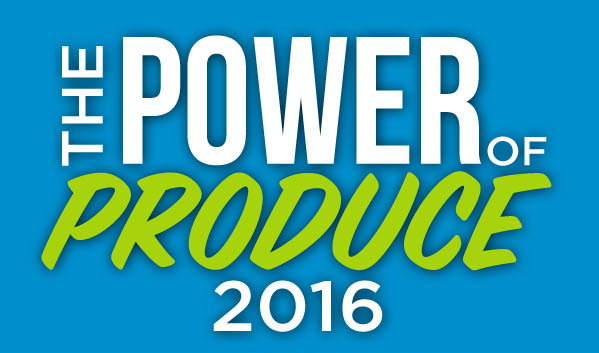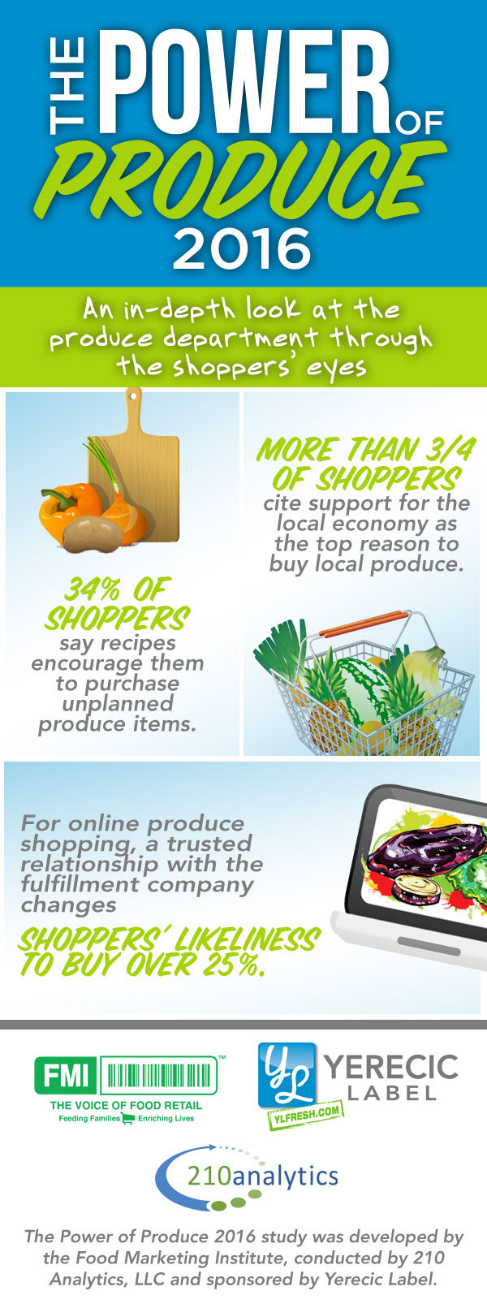 During the 2016 PMA Fresh Summit Expo, Yerecic Label partnered with FMI and 210 Analytics to deliver a powerful educational session featuring their latest shopper data. The presentation, titled “The Power of Produce” emphasized the importance of marketing, branding and consistency in labeling. We found the content of the presentation validating and Yerecic Label and 210 Analytics have allowed us to share the key takeaways with you on The Core! This infographic from Yerecic provides high-level insights followed by an in-depth look at produce through the shoppers’ eyes below.
During the 2016 PMA Fresh Summit Expo, Yerecic Label partnered with FMI and 210 Analytics to deliver a powerful educational session featuring their latest shopper data. The presentation, titled “The Power of Produce” emphasized the importance of marketing, branding and consistency in labeling. We found the content of the presentation validating and Yerecic Label and 210 Analytics have allowed us to share the key takeaways with you on The Core! This infographic from Yerecic provides high-level insights followed by an in-depth look at produce through the shoppers’ eyes below.

Key Session Takeaways
- Trip and channel trends emphasize the importance of produce to total store success.
Nearly one-quarter of shoppers switch outlets when purchasing fresh produce versus the bulk of groceries. Supermarkets are a produce stronghold and the primary destination among switchers, followed by farmers’ markets/produce stands and specialty organic stores. Online purchases remain a fraction of the total, but purchase interest does rise if fulfillment is supported by the primary produce department. Younger generations are drawn to alternative channels, including farmers’ markets, specialty stores and online purchasing. - Promotions are key to solidifying sales among primary shoppers and attracting secondary shoppers.
Despite a significant drop in usage, the paper circular is easily still the top promotional research vehicle — driven by the older generations. At the same time, digital and in-store research are reaching critical mass, due to the Millennials. This emphasizes the importance of an omnichannel promotional strategy and leveraging segmentation rather than a one-size-fits-all approach. - Value drives the purchasing decision more than price.
While price and promotions influence the purchase during pre-trip planning, ultimately, shoppers seek the ideal combination of the best produce for the best price by emphasizing appearance over cost. Shoppers are susceptible to impulse as well and point to eye-catching displays, recipe/serving ideas, nutrition callouts and sampling as drivers of unplanned produce purchases. - A growing consumer desire for transparency in the product/production process is driving sales gains.
Shoppers’ growing desire for “free-from” products is driving double-digit sales gains for organic fresh produce through increased household penetration along with bigger baskets. However, organic remains a niche segment to date, reflecting 8 percent of total produce sales, with usage skewing to the more affluent shoppers and families with children. Interest in locally-grown also became stronger with a tightening definition in the eyes of the shopper. - Convenience solutions see growth but still require careful targeting based on the store audience.
Value-added produce has been consistently growing, albeit dollars faster than volume. Although household penetration grew, most shoppers only opt in for select items. Usage continues to skew toward the higher incomes and most current buyers expect to keep spending the same — signaling any price increases should be proportional with the level of convenience offered. - Fresh produce is in demand as shoppers recognize current consumption is falling short.
Fresh produce is a mature category and driving growth requires innovative strategies aimed at moving shoppers into new usage occasions, new categories and to higher consumption frequencies. Fresh produce is in demand with 75 percent trying to eat more fruits and vegetables.
The Power of Produce 2016 is commissioned by the Food Marketing Institute (FMI), conducted by 210 Analytics and made possible by Yerecic Label. For a copy of the research, email: Rick Stein, VP of Fresh at rstein@fmi.org. For questions, email: Anne-Marie Roerink at aroerink@210analytics.com.











